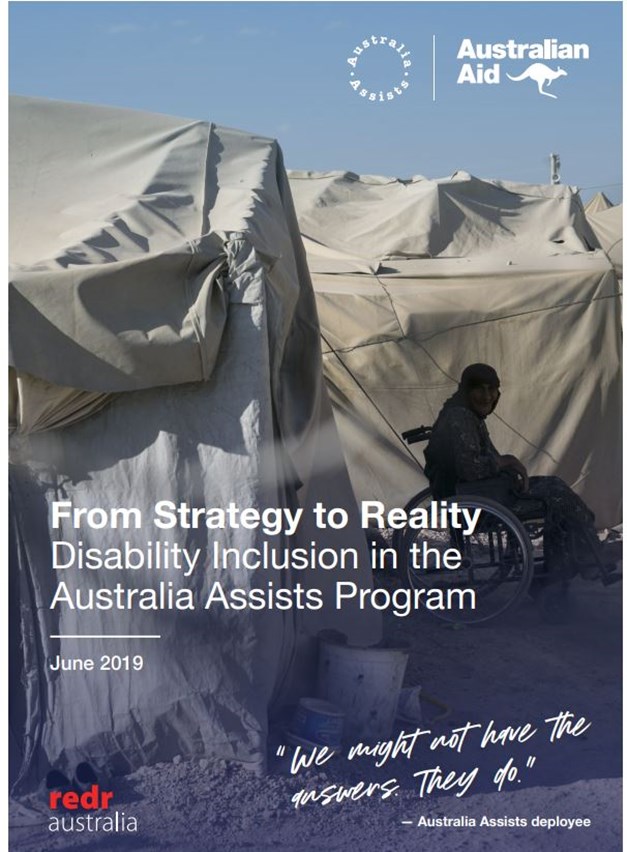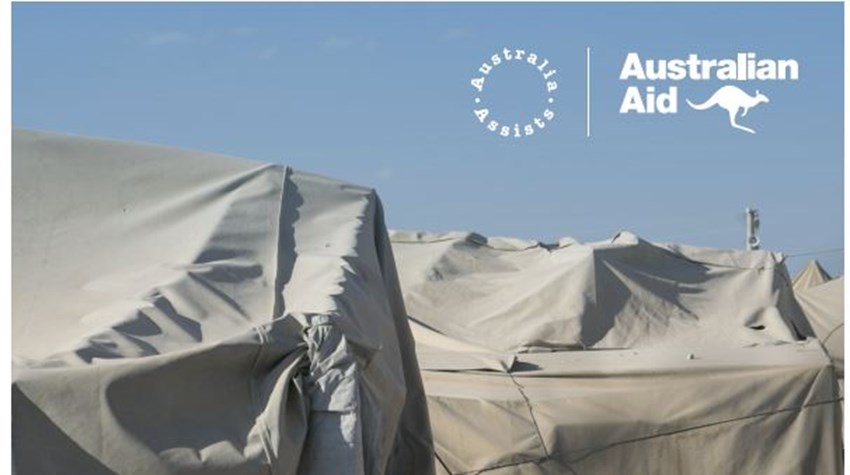Read RedR Australia’s impact and learning report, From Strategy to Reality: Disability Inclusion in the Australia Assists Program here.
Through the support of Australia Assists, RedR Australia has produced a new impact and learning report, From Strategy to Reality: Disability Inclusion in the Australia Assists program, that explores how disability inclusion can work in practice for Australia Assists deployees.
According to CBM Australia, people with disabilities are often invisible before, during, and after humanitarian crises. They can be overlooked in disaster risk reduction plans, excluded from essential services, and vulnerable to exploitation. As a result, they can be disproportionately affected by disasters and conflict.
“Disability issues are given support on paper and in theory, but not always in reality. People with disabilities get put aside when other priorities emerge like preparing for floods and monsoon, or responding to a cholera outbreak,” said an Australia Assists deployee interviewed for the report.
In recognition of its importance in humanitarian action, and with a commitment to the Australia Assists Disability Inclusion Strategy, RedR Australia further spoke with a number of its roster members to understand how they have been able to approach disability inclusion in their work.
The report describes how deployees have found ways to consider disability across the humanitarian cycle. It also explores the enabling and inhibiting factors that contribute to the delivery of strong disability inclusion in Australia Assists.
Findings show that deployees were most successful when they discussed disability inclusion during the pre-deployment phase, when they had direct contact with those living with a disability, and when they were able to involve the affected population in decision-making about humanitarian assistance.
“People with disabilities are often thought of as a ‘vulnerable group’. Actually the vulnerability is created by society and the barriers people face. People with disabilities have resilience and determination. We need to recognise this and build it further,” said an Australia Assists deployee.
To continue in its pursuit of inclusive humanitarian response, and with the support of Australia Assists, RedR Australia will support more disability-specific deployments, provide tailored mentoring support to deployees, share tip sheets and examples of good practice, and continue to publish an evidence base of successes, enablers and barriers to inclusive humanitarian action.
“It’s about listening and speaking to people with disabilities. We might not have the answers. They do.”
RedR Australia would like to thank the roster members involved for their engagement in this important work.



